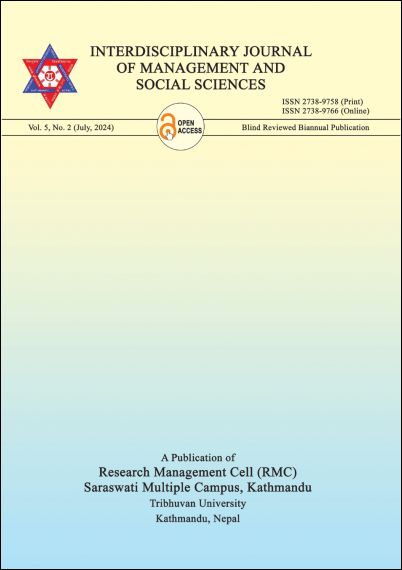Balance of Payment and its Determinants
DOI:
https://doi.org/10.3126/ijmss.v5i2.69454Keywords:
Balance of payments, direct determinants, remittances, ARDL model, economic stabilityAbstract
The Balance of Payments (BOP) is a critical measure of a country's economic transactions with the global economy, comprising the current, capital, and financial accounts. This study investigates the direct determinants of Nepal's BOP, focusing on exports, imports, foreign direct investment (FDI), and remittances from 2006 to 2019. Utilizing a quantitative research methodology, the study applies an Autoregressive Distributed Lag (ARDL) model to analyze the long-term and short-term relationships among these variables. The findings indicate that imports negatively impact the BOP, with a 1% increase in imports reducing the BOP by 0.72%. Conversely, remittances positively influence the BOP, where a 1% rise in remittances enhances the BOP by 1.06%. Although exports and FDI show positive correlations with the BOP, their impacts are not statistically significant, highlighting structural challenges in Nepal's export sector and investment climate. Diagnostic tests confirm the robustness of the ARDL model, indicating no serial correlation, heteroscedasticity, and normally distributed residuals. The present study highlights the need for strategies to manage imports, facilitate remittances, diversify and enhance exports, and attract foreign direct investment. Policymakers should focus on promoting domestic production, creating favorable conditions for remittance flows, improving export quality and market access, and fostering a conducive investment climate, while employing robust analytical techniques and considering long-term strategic planning for sustainable economic growth and BOP improvement.
Downloads
Downloads
Published
How to Cite
Issue
Section
License

This work is licensed under a Creative Commons Attribution-NonCommercial 4.0 International License.

